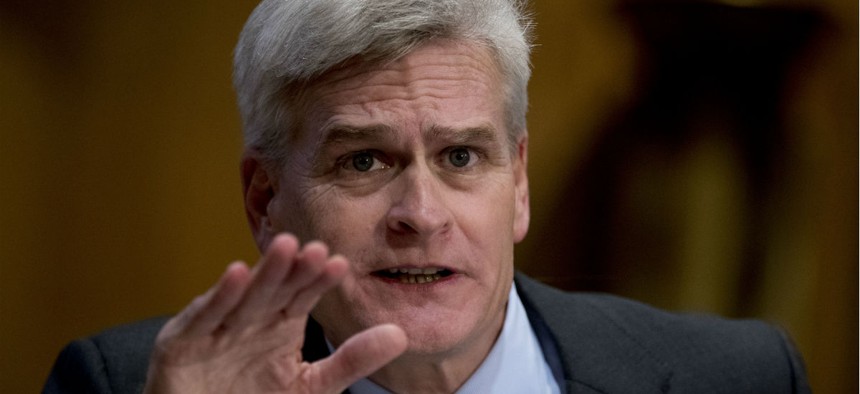House Approves Bill to Curb Spending on Official Portraits
Sen. Cassidy’s "EGO Act" would codify crackdown on agency vanity paintings.
In a move to curb what in days gone by was a common official perk, the House on Tuesday approved a bill that codifies a ban on taxpayer-funded official portraits of top agency officials.
The Eliminating Government-funded Oil-painting (EGO) Act, originally sponsored by Sen. Bill Cassidy, R-La., cleared the chamber by voice vote, but must go back to the Senate for a technical correction before heading to President Trump’s desk.
“No funds appropriated or otherwise made available to the federal government may be used to pay for the painting of a portrait of an officer or employee of the federal government, including the president, the vice president, a Member of Congress, the head of an executive agency, or the head of an office of the legislative branch,” the bill reads. Similar language has been included annually in spending bills since 2014, Cassidy’s staff said.
“The national debt is over $20 trillion,” said Cassidy, noting that the government’s spending on such portraits in the past two years had cost as much as $400,000. “There’s no excuse for spending hundreds of thousands of dollars on paintings of government officials.”
The Congressional Budget Office last year estimated that the bill might save $500,000, assuming the average portrait cost $25,000.
Cassidy’s bill was co-sponsored by Sens. Claire McCaskill, D-Mo.; Deb Fischer, R-Neb.; and Ron Johnson, R-Wis. The House version was introduced by Rep. Matt Cartwright, D-Pa. “Every dollar the government spends on vanity projects for federal officials is a dollar that is not spent improving the lives of hardworking Americans,” he said on Tuesday. “It’s just wrong to spend taxpayer dollars on portraits the public will never see.”




